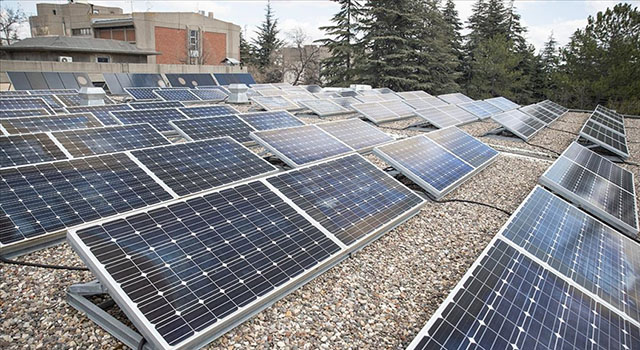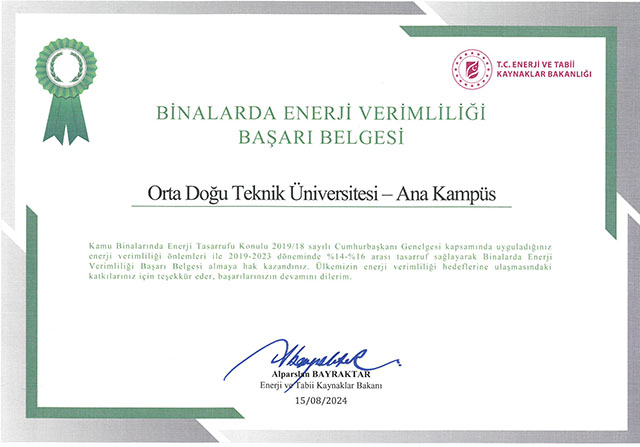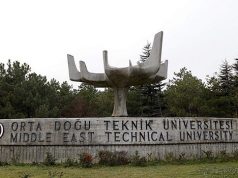
Middle East Technical University has been recognized as one of the public institutions deemed “successful” by achieving a 15% energy savings goal during the 2019-2023 period, compared to the reference energy consumption calculated based on energy usage in the years 2016, 2017, and 2018. The “Certificate of Achievement in Energy Efficiency in Buildings” earned by the METU Campus in Ankara was signed by the Minister of Energy and Natural Resources, Alparslan Bayraktar, on August 15, 2024, and sent to METU on September 5, 2024.

In order to ensure the efficient use of public resources and reduce energy costs, a 15% energy savings target was set for public buildings required to appoint an energy manager, under the Presidential Circular dated August 15, 2019, and numbered 2019/18, based on the Energy Efficiency Law No. 5627. The “Savings Target and Implementation Guide for Public Buildings (2017-2023)” was prepared under the coordination of the Ministry of Energy and Natural Resources with the purpose of achieving the designated savings goals, thus ensuring energy efficiency and emission reduction. The relevant public institutions prepared and submitted their reports in accordance with the principles outlined in the guide by June 30, 2024, and their performance in meeting the previously set targets was evaluated by the ministry.
For public institutions like METU that have reached their energy efficiency goals, the new target has been set at 30% energy savings by the end of 2030, as outlined in the Presidential Circular No. 2023/15.
In 2023, METU took the second place in the Interuniversity Energy Efficiency Competition (ÜNVER-2) thanks to its “Successful Energy Efficiency Practices on University Campus.” One of the key factors that brought METU this success was the improvement of the campus in line with the principles of creating a greener, smarter, more sustainable, eco-friendly, and energy-efficient campus, which are also among the major goals of METU’s strategic plan. Efforts and practices at the METU campus, such as reducing water and energy consumption, lowering carbon emissions, implementing energy efficiency measures, planning energy needs, establishing procedures and measures to reduce waste, launching recycling programs, and meeting the energy needs of the campus through renewable sources played a significant role in achieving this success.







